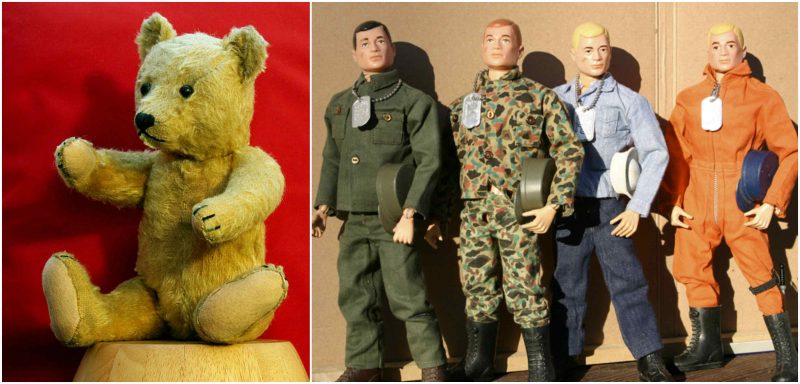The 1910s — Teddy Bear
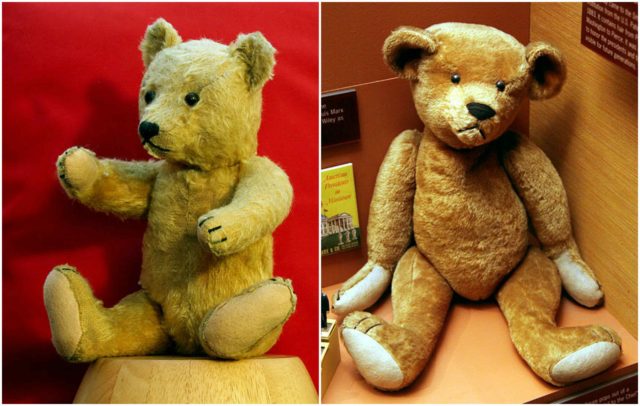
It all began when Theodore Roosevelt was on a bear hunting trip in 1902. He had been invited by Mississippi Governor Andrew H. Longino, and unlike other hunters in the group, had not located a single bear. When his assistants cornered and tied a black bear to a tree for Roosevelt to shoot it, he refused, deeming this unsportsmanlike.
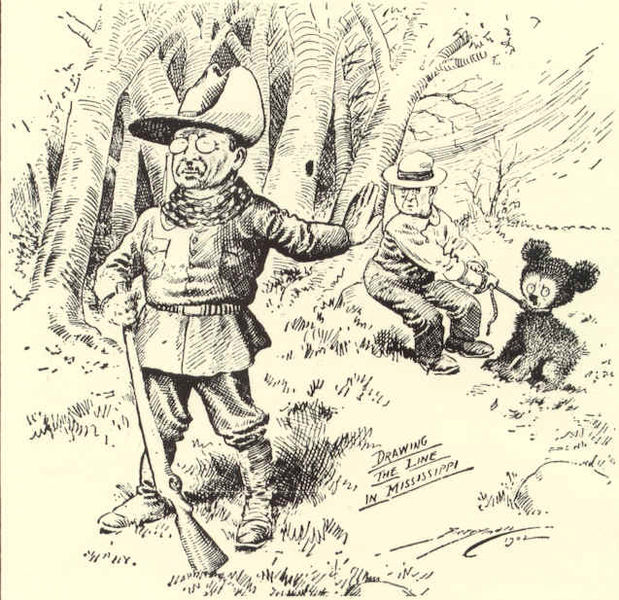
After Brooklyn shopkeeper Morris Mictom saw a political cartoon about the incident, he and his wife made a stuffed fabric “Teddy’s bear” and put it in their shop window, sparking immediate customer interest. Around the same time, a family-owned toy company in Germany began making stuffed bears of its own.
Bought in bulk by a U.S. manufacturer, the German bears officially became known as teddy bears in 1906. Other companies jumped on the bandwagon, launching an international teddy craze that hasn’t really stopped since.
Honorable mention: Erector sets, Lionel trains
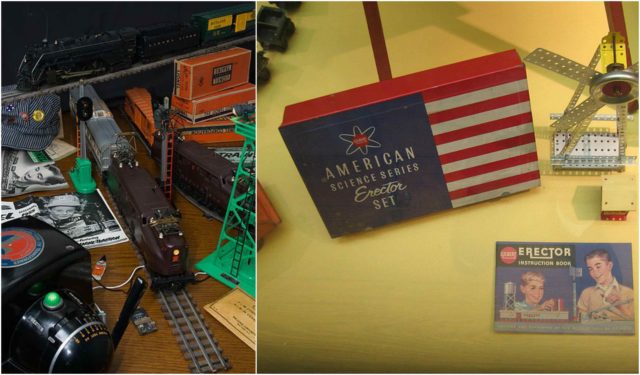
The 1920s — Yo-Yo
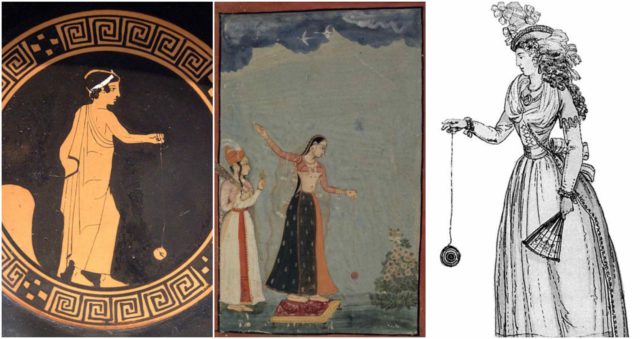
First made popular in the 1920s, yo-yo-ing remains a popular pastime of many generations and cultures. It was first invented in ancient Greece.
In 1928 Pedro Flores, a Filipino immigrant to the United States opened the Yo-yo Manufacturing Company in Santa Barbara, California. The business started with a dozen handmade toys; by November 1929, Flores was operating two additional factories in Los Angeles and Hollywood, which altogether employed 600 workers and produced 300,000 units daily.
Flores soon sold his toy company to a competitor, Don Duncan, a marketing whiz whose promotional Yo-Yo trick contests would launch the toy’s popularity into the stratosphere.
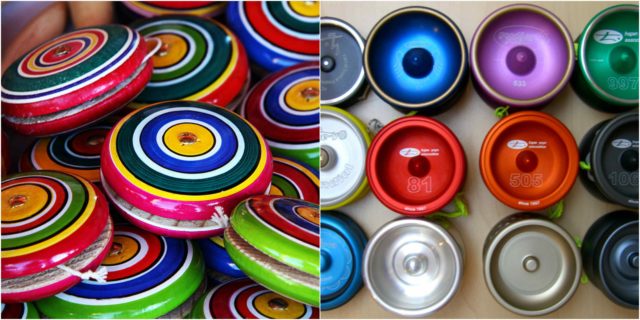
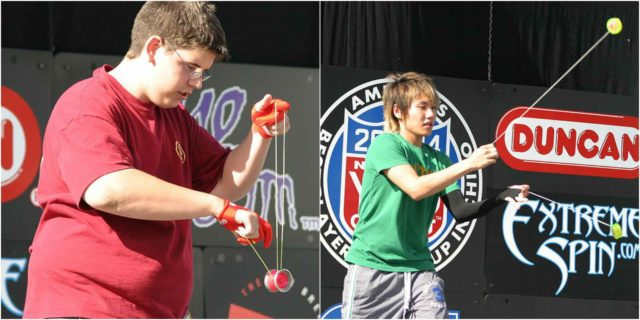
Both – at the 2004 US nationals in Chico, California
Honorable mention: Tinker Toys, Raggedy Ann
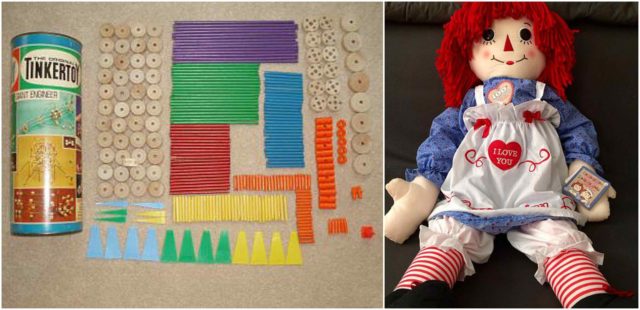
The 1930s — Shirley Temple doll
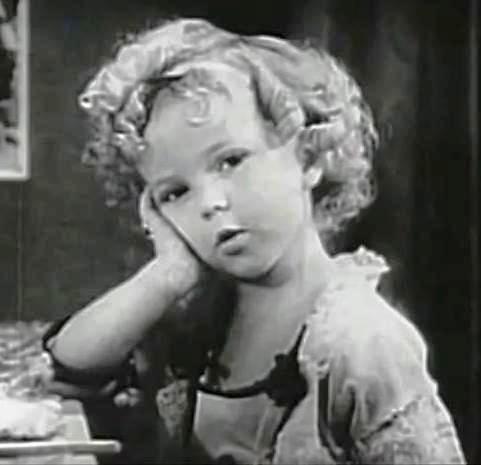
Those curls, those dimples…who wouldn’t want a doll version of Shirley Temple? For Christmas in 1934, the Ideal Toy and Novelty Company began manufacturing a doll based on America’s favorite child star, whose hit movie “Bright Eyes” was released just after the holiday.
Only 6 years old at the time, Temple already had some 20 films under her tiny belt. By singing, dancing and being generally adorable, she helped countless people escape their worries during the Great Depression when they desperately needed to.
Priced at around $3 to $5 (a large sum of money at the time) the dolls made some $45 million for Ideal over seven years of production and enjoyed an afterlife as prized collectors’ items: As of 2010, an original Shirley Temple doll went for more than $1,500 on eBay.
Honorable mention: Monopoly, Red Ryder BB gun
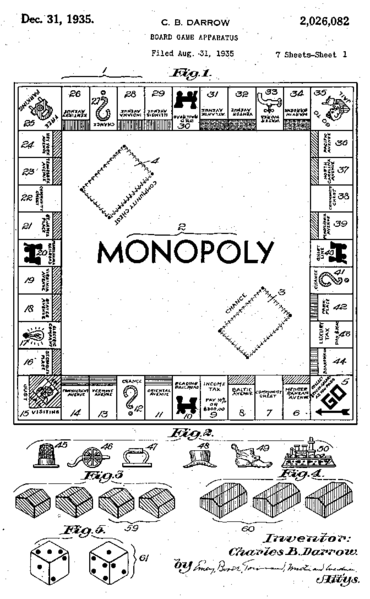

The 1940s — Slinky
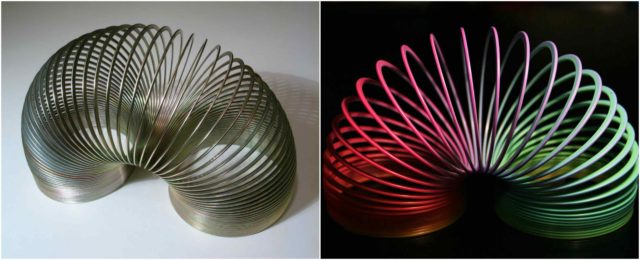
The toy was invented and developed by naval engineer Richard T. James in 1943 and demonstrated at Gimbels department store in Philadelphia in November 1945. The toy was a hit, selling its entire inventory of 400 units in ninety minutes.
James and his wife Betty formed James Industries in Clifton Heights, Pennsylvania to manufacture Slinky and several related toys such as the Slinky Dog and Suzie, the Slinky Worm.
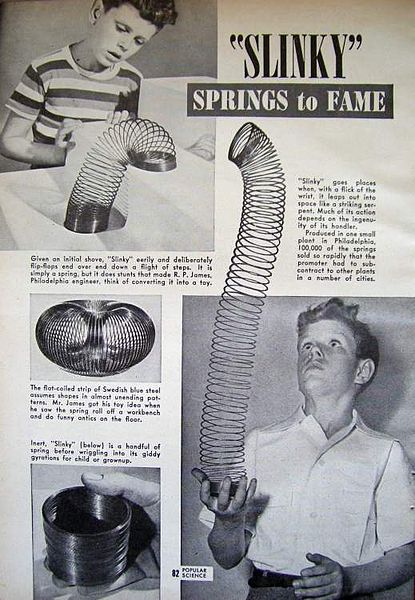
In 1960, James’ wife Betty became president of James Industries, and, in 1964, moved the operation to Hollidaysburg, Pennsylvania. In 1998, Betty James sold the company to Poof Products, Inc.
Honorable mention: LEGOs, Silly Putty
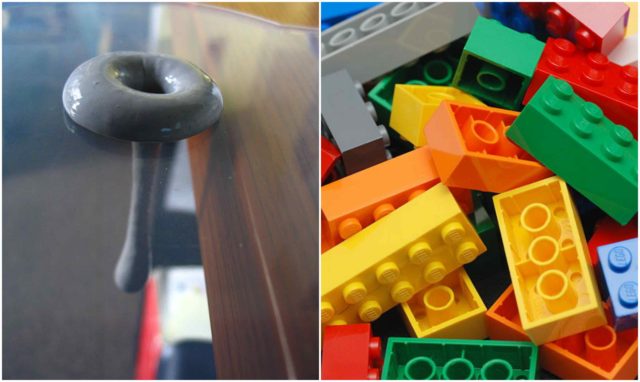
The 1950s — Mr. Potato Head
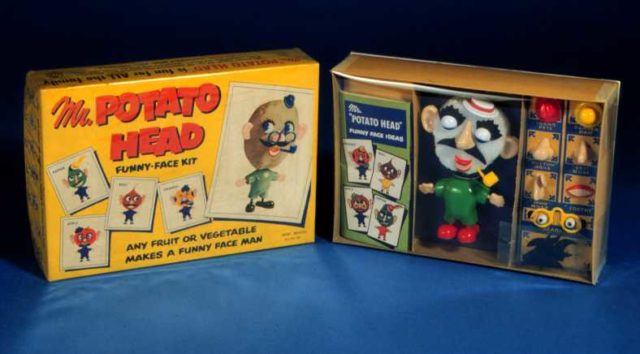
Mr. Potato Head was “born” on May 1, 1952. The original toy cost $0.98, and contained hands, feet, ears, two mouths, two pairs of eyes, four noses, three hats, eyeglasses, a pipe, and eight felt pieces resembling facial hair.
The original Mr. Potato Head kit did not come with a potato “body”, so parents had to provide their own potato into which children could stick the various pieces. Shortly after the toy’s initial release, an order form for 50 additional pieces was enclosed in every kit.
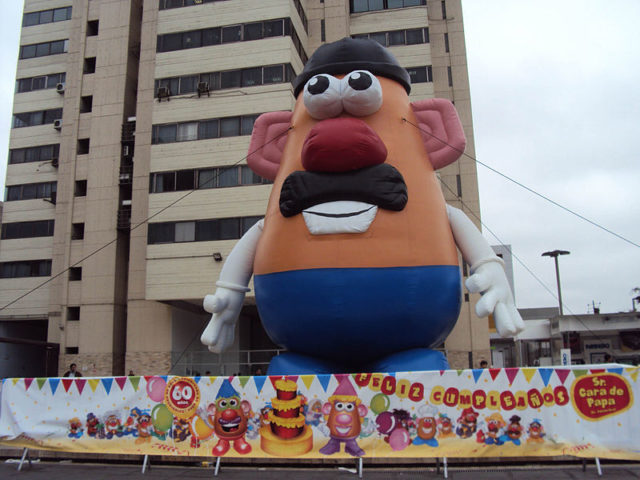
On April 30, 1952, Mr. Potato Head became the first toy advertised on television. It was invented by the toy inventor George Lerner who later sold the idea to a cereal company for $5,000. Later, he showed the idea to showed the idea to Henry and Merrill Hassenfeld, who are the establishers of Hasbro and who created the Mr. Potato Head toy.
Honorable mention: Hula Hoop, Barbie, Play-Doh, Tonka Trunks (The ‘50s was a golden age for toys!)
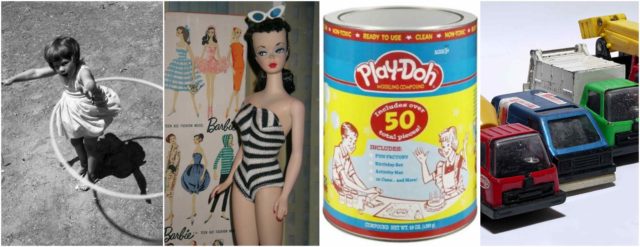
The 1960s — G.I. Joe
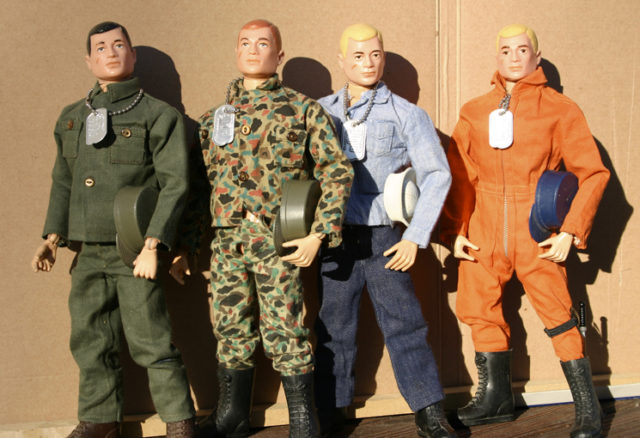
The conventional marketing wisdom of the early 1960s was that boys would not play with dolls, thus introduced as a kind of male counterpart to Mattel’s iconic Barbie, the “Government-Issue Joe” (as ordinary soldiers were known during World War II) was described not as a doll, but as an “action figure”.
It has since become the generic description for any poseable doll intended for boys, while the word “doll” was never used by Hasbro or anyone involved in the development or marketing of G.I. Joe.
“America’s movable fighting man” is a registered trademark of Hasbro, and was prominently displayed on every boxed figure package. The Hasbro prototypes were originally named “Rocky” (marine/soldier) “Skip” (sailor) and “Ace” (pilot), before the universal name G.I. Joe was adopted. One of the prototypes would later sell in a Heritage auction in 2003 for $200,001.
Honorable mention: Etch-a-Sketch, Easy Bake Oven, Playmobil
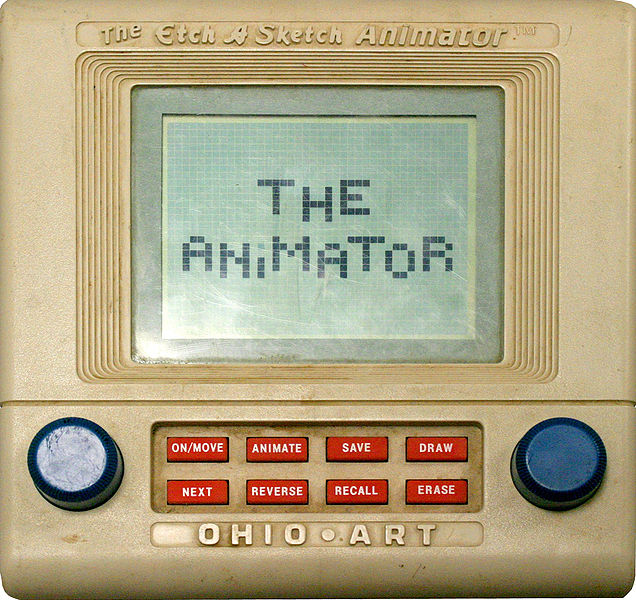
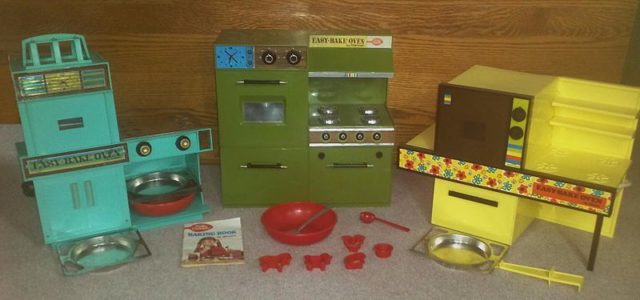
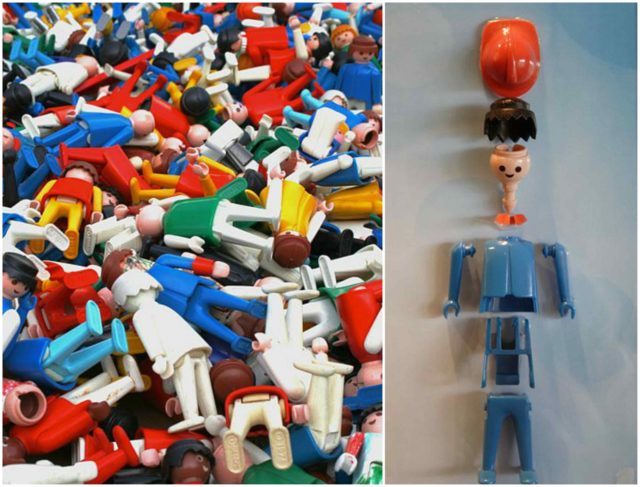
The 1970s — Star Wars action figures
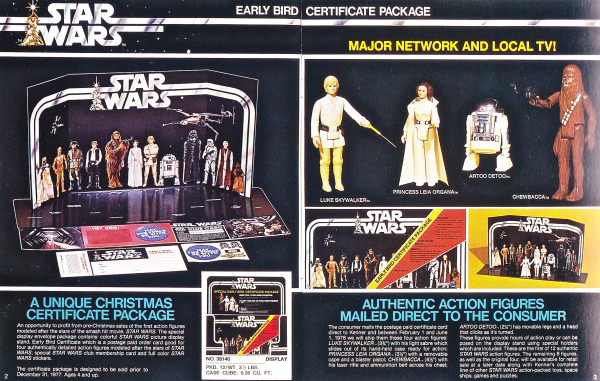
No one predicted the massive success of George Lucas’ “Star Wars,” released by 20th Century Fox in May 1977. By Christmas of that year, toy company Kenner hadn’t even started production on movie-related action figures. Instead, lucky children unwrapped vouchers to be redeemed for 3.75-inch versions of Luke Skywalker, Princess Leia, Hans Solo, Chewbacca, Darth Vader and more than 100 other characters.
Released in 1978, Star Wars action figures sold briskly until 1985; they were relaunched in the mid-1990s ahead of the release of three more installments in the space saga. Now, with “Episode VII: The Force Awakens” on its way, the franchise is hotter than ever, and original 1978 figures are collector’s items worth up to $200,000.
Honorable mention: NERF ball; Speak and Spell
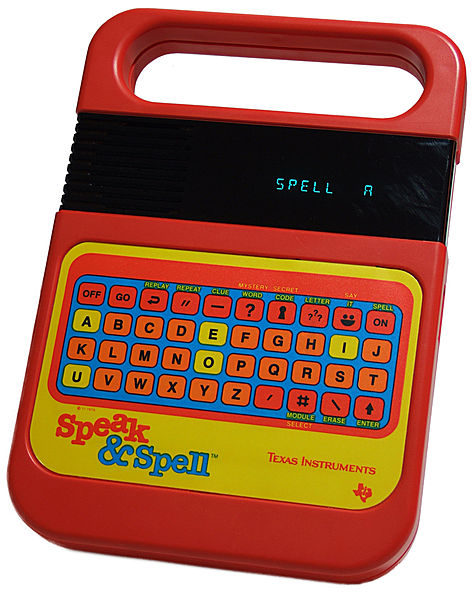
The 1980s — Cabbage Patch Kids
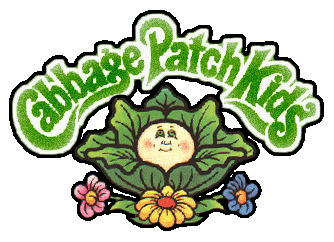
A line of soft sculptured dolls, Cabbage Patch Kids are created by Xavier Roberts and registered in the United States copyright office in 1978.
A21-year-old old art student, Xavier utilized the quilting skills he learned from his mother and the historic technique of “needle molding” to develop his own line of fabric sculptures. He called these hand-stitched, one-of-a-kind, soft fabric sculptures “The Little People”. His Little People were not offered for sale, but were “adopted” each with their own individual name and birth certificate.
As Cabbage Patch mania swept the nation, the dolls sold on the black market for 10 times their retail price of $25. By the end of the first year in 1983, 3 million Cabbage Patch Kids were sold (adopted). The product continued to exceed all expectations in 1984 resulting in $2.5 billion in retail sales.
Honorable mention: Rubik’s Cube, Transformers, Koosh ball, Teddy Ruxpin
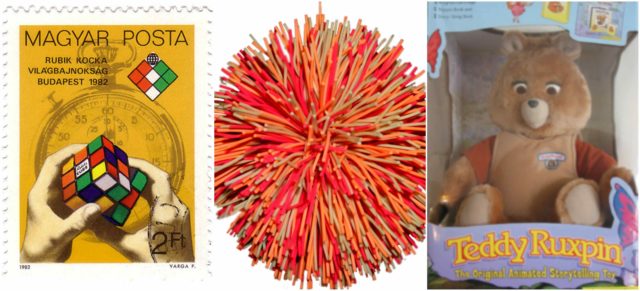
The 1990s — Beanie Babies
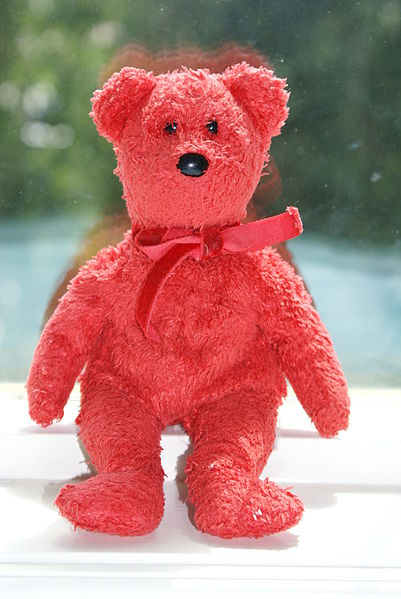
Nine original Beanie Babies were launched in 1993: Legs the Frog, Squealer the Pig, Spot the Dog, Flash the Dolphin, Splash the Whale, Chocolate the Moose, Patti the Platypus, Brownie the Bear (later renamed “Cubbie”), and Pinchers the Lobster (with some tag errors with “Punchers”).
They were not in factory production until 1994. Sales were slow at first to the point that by 1995 many retailers either refused to buy the products in the bundles TY offered them while others outright refused to buy them in any form. The popularity soon grew, however first starting locally in Chicago before growing into a national craze.
Beanie Babies, squishy stuffed animals with cute names, had enjoyed respectable sales for several years before toymaker H. Ty Warner decided to “retire” some of the successful animals, instantly turning them into hot commodities.
Warner racked up more than $250 million in sales by the end of 1996, as kids and parents scoured the stores that Christmas season for the soon-to-be-collectibles, often settling for new, less sought-after babies instead.
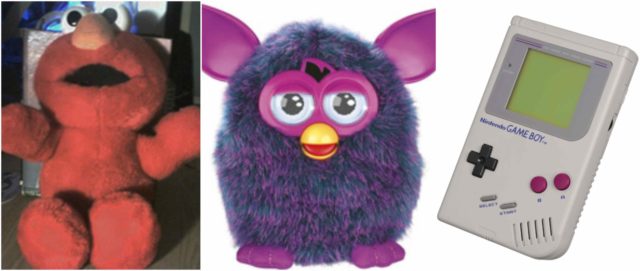
Honorable mention: Tickle me Elmo, Furby, Nintendo Game Boy
